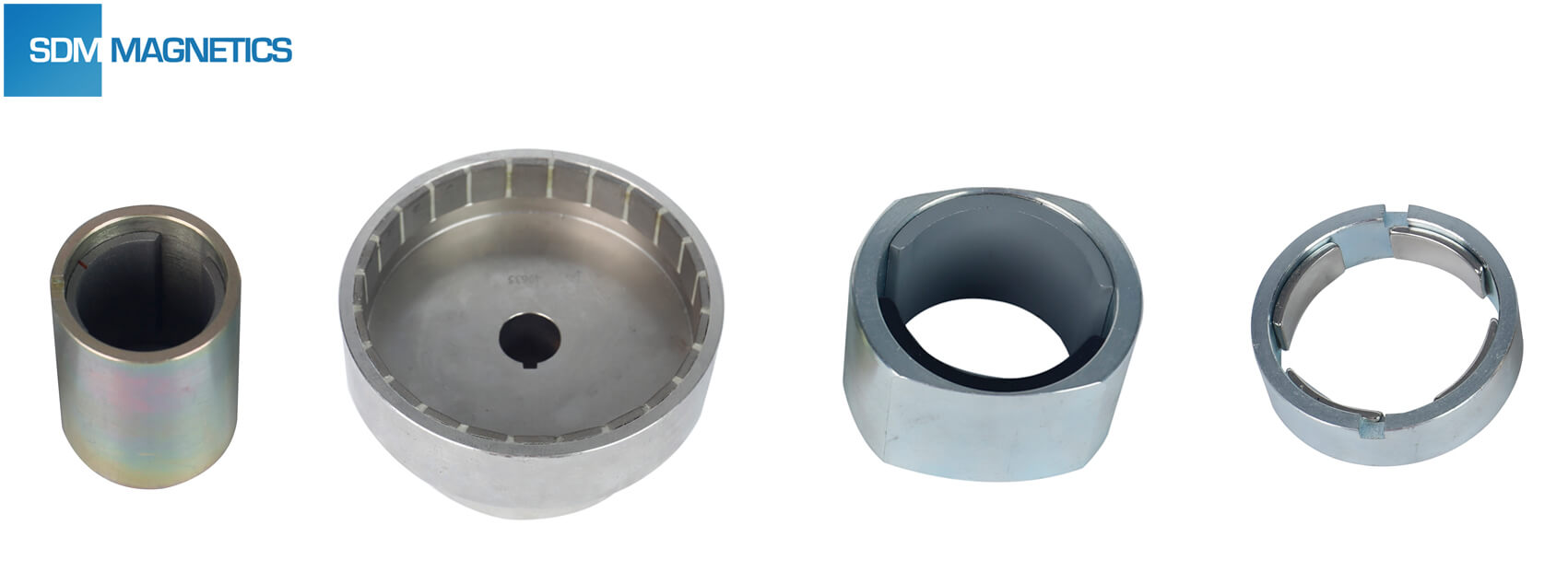Both thermal expansion and magnetostriction of rare earth permanent magnet can lead to dimension change in different degrees, and the magnets in the magnetic device will generate a certain of stress due to such dimension change if the expansion difference between magnets and assembly material relatively large, and thus cause mechanical damages and magnetic performance deteriorations, especially larger size magnetic devices. Therefore, thermal expansion and magnetostriction should be given sufficient attention.

Regular metal and nonmetallic materials have a positive coefficient of linear expansion. For instance, coefficient of linear expansion of steel, Copper and Aluminum achieves 12 x 10-6/deg C, 17 x 10-6/deg C and 24 x 10-6/deg C respectively. The coefficient of sintered ferrite magnets and Samarium Cobalt magnet is from 10 x 10-6/deg C to 15 x 10-6/deg C which close to steel, so might not need to worry about mismatch during assemble with iron yoke. Thermal expansion behaviors of ferrite and Samarium Cobalt magnets are anisotropic due to the strong magnetocryctalline anisotropy, and Neodymium magnets are even more special. Nd2Fe14B phase has obvious Invarable effect under the Curie temperature that linear expansion coefficient on the direction perpendicular to the c-axis is minus, and coefficient on the direction parallel to the c-axis revert back to a positive number when 70 deg C below the Curie temperature. The abnormal thermal expansion stem from magnetic characteristics of 3d electron of Iron atom, and hence cause mismatch phenomenon when utilizing bonding method to assemble Neodymium magnets and other material. Some research has indicated that adding moderate Cobalt to main phase can alleviate Invarable effect and mismatch between different materials.
